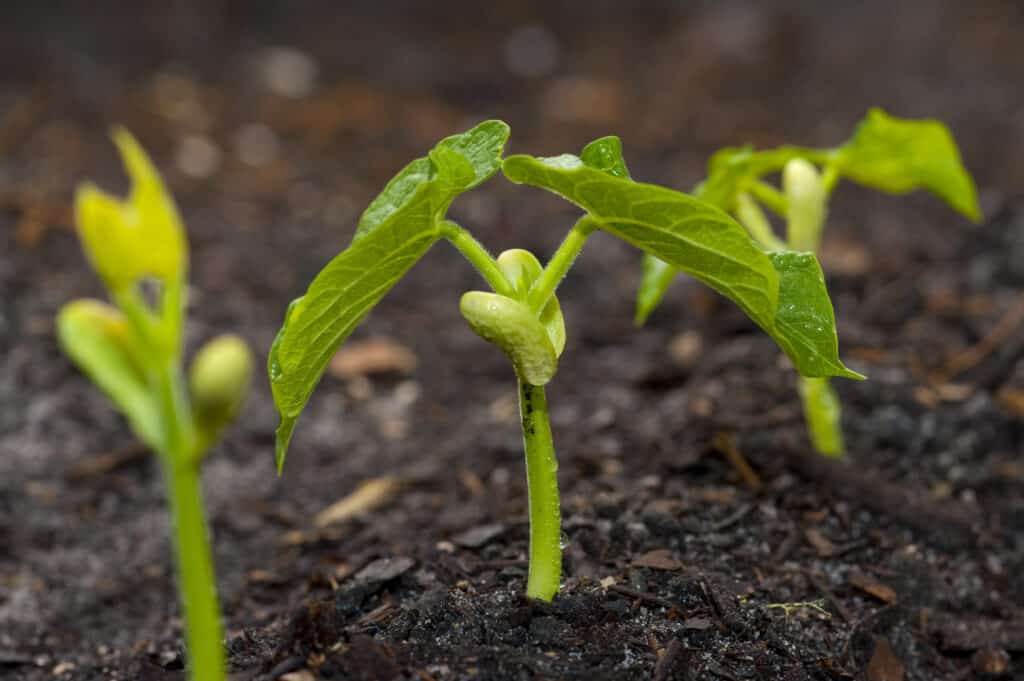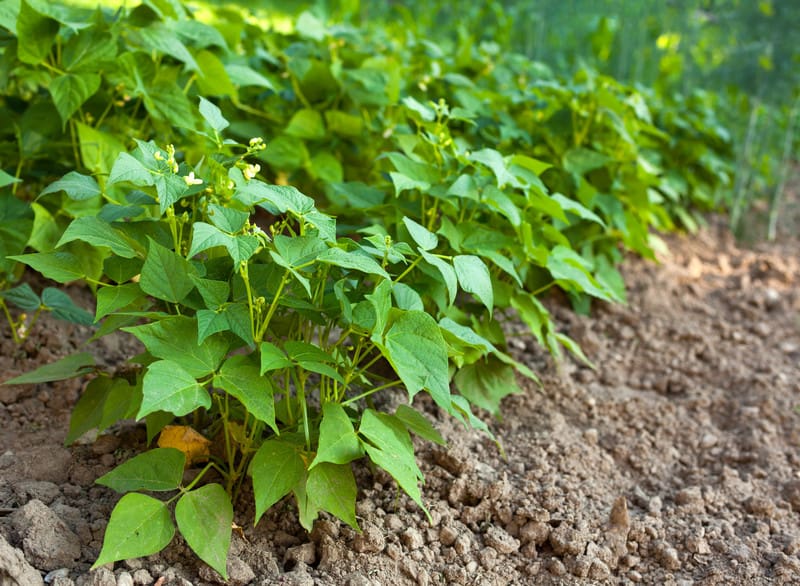
Direct sow beans in the garden 1 to 2 weeks after the last expected frost when the soil has warmed to at least 60°F (16°C). Start beans indoors 3 to 2 weeks before transplanting to the garden.
• Bush beans are usually determinate with one week or two week period of harvest; bush beans are usually planted every 10 days to ensure a continuous harvest through summer.
• Pole beans are usually indeterminate, or vining, with a continuous harvest over 6 to 8 weeks if the beans are picked every two days.
• Warm-season beans are further categorized as (1) snap beans which are eaten pod and all when immature and still tender, (2) shell beans which are picked when the beans in the pod are just slightly lumpy—these beans are eaten without the pods, and (3) dry beans which are allowed to dry and wither on the vine before being harvested and threshed.
Beans growing tips at How to Grow Beans.
Common names for warm-season beans are snap bean, green bean, French bean, wax bean, Romano bean, string bean, and stringless bean.
Bush beans mature in 45 to 60 frost-free days. Pole beans mature in 60 to 85 frost-free days after sowing.
Bean Sowing and Planting Tips
- Grow beans from seeds or seedlings.
- Seed is viable for 2 years.
- Direct-sow beans in the garden in spring after all danger of frost has passed and the soil has warmed to 60°F (16°C). In warm-winter regions, sow beans in late summer for harvest in winter. Time sowing so that beans come to harvest before the first frost.
- Optimal soil temperature for growing bush or pole beans is 70°F to 80°F (16-18°C).
- If you want to start beans indoors, sow seed in peat pots 3 to 2 weeks before transplanting seedlings to the garden. The optimal indoor temperature is 65°F (18°C) until germination.
- Sow seed 1 inch (2.5 cm) deep.
- Seeds germinate in 4 to 10 days.
- Transplant beans into the garden after the soil has warmed to at least 70°F (21°C).
- Space bush beans 6 inches (15 cm) apart in all directions; space pole beans 4 inches (10 cm) apart.
- When sowing pole bean seed at or before sowing, put poles or a trellis in place for vines to climb.
- Bush beans are usually determinate with a 1 to 2 week period of harvest—then the plant will be finished; poled beans are indeterminate with a continuous harvest over 6 to 8 weeks if they are picked every two days and are not allowed to ripen on the vine.
- Keep the soil just moist; letting the soil dry out will interrupt pod development.
- Fertilize with fish emulsion or a soluble complete fertilizer at half strength.
- Add aged compost to planting beds in advance of transplanting.
- Beans prefer a soil pH range of 6.0 to 6.8.
- Grow beans in full sun for best yield.
- Avoid planting beans where cabbage family plants or onions have grown recently.
- Common bean pest enemies include aphids, bean leaf beetles, leafhoppers, cabbage loopers cucumber beetles, flea beetles, Mexican bean beetles, and whiteflies.
- Common diseases include Anthracnose, bacterial blight, and wilt, bean rust, common mosaic, fusarium wilt, downy mildew, powdery mildew, yellow mosaic.
Interplanting: Plant bush beans with carrots, celery, chard, corn, cucumber, eggplant, potatoes, and strawberry. Plant pole beans with corn, rosemary, and sunflowers.
Container Growing Beans: Choose bush varieties for containers. Use a container 8 inches (20 cm) wide and 8 to 10 inches deep.
Bean Planting Calendar
- 4-2 weeks before the last frost in spring: sow seeds indoors for transplanting out after a week or two after the last frost.
- 1 week after the last frost in spring: direct sow bush and pole beans in the garden when the soil has warmed to at least 60°
- Every 2 weeks after direct-sow succession crops of bush beans in the garden until mid- to late-summer; pole beans should keep producing if pods are picked regularly.
For Fall Harvest:
- 14-12 weeks before the first frost in autumn: direct sow or sow seeds indoors for transplanting out when space opens in the garden.

Recommended Bean Varieties
There are many varieties of bush and pole beans:
- Snap beans: ‘Blue Lake’ and ‘Kentucky Wonder’ are classic bush or pole varieties.
- Shell beans: ‘French Horticulture’ is a favorite shell bean.
- Dried beans: ‘Great Northern White’, ‘Jacob’s Cattle’, ‘Vermont Cranberry’.
- Lima bean: ‘Fordhook 242’, ‘Henderson Bush’.
- Fava bean: ‘Broad Windsor’ is a classic fava bean.
- Chickpea: ‘Chickpea’, ‘Garbanzo’.
- Soybean: ‘Early Hakucho’, ‘Envy’.
Botanical Name: Phaseolus vulgaris
Beans are a member of the Fabaceae family.
Related articles:
How to Plant and Grow Snap Beans
How to Harvest and Store Snap Beans
Bean Growing Problems: Troubleshooting
Five Ways to Quick Cook and Serve Snap Beans
How to Can Green Snap Beans for Beginners
Cooking and Serving Yard-Long Beans
How to Grow Chickpeas and Garbanzo Beans
How to Grow Broad Beans and Lima Beans















